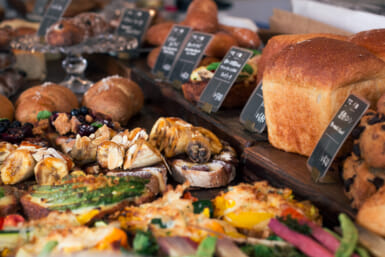A good number of restaurants in Japan feature plastic models of their specialties displayed outdoors. Many others, however, rely on a type of curtain, called “noren,” to identify the type of food they serve; to lure customers in. To the foreigner who cannot read Japanese, this is confusing. And the shy gaijin who doesn’t want to stick his head in the door just to find out what the specialty of the house is, may go hungry, and certainly is missing some culinary treats.
Although noren are used to identify all kinds of establishments, we’ve concentrated on some of the more common restaurant signs here. Our Guide to Noren for Hungry Foreigners. Once you can read the 14 noren pictured here without the guide, you’ll be gastronomically self-ufficient.
Noren, to add to the confusion, are sometimes read left to right, sometimes right to left and sometimes from top to bottom. Also, they often incorporate the shop name with the characters for the specialty of the house. We’ve identified below each noren pictured, along with the correct reading direction. We’ve also pointed out which are the important characters to remember, if there are others involved.
So, when you next go out restaurant-scouting and the noren makes no sense read one way, try another. If that doesn’t work, you probably don’t want what the joint serves anyway and should try another place.
Top lines, No. 1 shows a tempura noren, No. 2 (read right to left), the most common type of sushi sign; No. 3 (R to L) tonkatsu, Japanese-style pork cutlets, No. 4 (L to R) fugu or blowfish, a specialty that can be fatal. The final character is the name of the shop, so it’s only the first two you should commit to memory.
Line three: No. 5 (L-R) yakitori, and at right (No. 6) is the sign for meshi, a kind of Japanese pilaff. The round character is read “me” and the long one is a stylized version of “shi.”
Line four: No. 7 Chinese food, No. 8 (L-R) yakisoba, or fried noodles; No. 9 (L-R) udon, type of noodle—only the last three characters count; and lastly No. 10 soba ((R-L), the overall name for noodles of all kinds.
Last lines: No. 11 (R-L) another common rendering for soba, No. 12 (L-R) sukiyaki; No. 13 (R-L) unagi, or eel and finally No. 14 the one character for sake. Bon apetit!
(S.S.)









